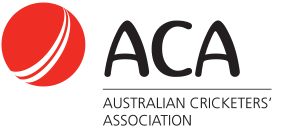From cricketer to engineer - The Julie Page story
5 May, 2016
Former Australian Shooting Star and South Australian Scorpion Julie Page goes one on one with the ACA to discuss highlights of her career, her professional work career as an engineer and her ambitions for the game following her appointment to the Northern Territory Cricket Association Board.
You played a number of matches for the South Australian Scorpions – do you have a cricket highlight?
I have a number of highlights from my domestic career, but if I had to choose one it would be beating the VicSpirit at the Adelaide Oval to progress into our first WNCL final. I hit a couple sixes in that game too, which was satisfying.
What is your favourite ground to play at?
Adelaide Oval, closely followed by Gardens Oval (Darwin).
In your playing days you were famous for “Wormy’s corner” (late cut to third man) – it didn’t matter how many fielders captains had on the offside you always scored runs in that region. Any other favourite shots?
I was known by other players as having a “pretty” cover drive. Also, nothing is more satisfying than playing one off the hips/legs behind square leg to the boundary.
You were a diligent member of the Shooting Stars Squad that toured Sri Lanka and New Zealand. Did these development pathways help take your game to the next level?
Having an opportunity to take my cricket overseas presented a wonderful opportunity to play the game in different conditions against talented opposition. I was fortunate to also play for the Under 19 Australian team that played against a youth England team at Bradman Oval. These development pathways were crucial to performing at the next level and gave me the confidence that if I could perform well for my State team, and were crucial for transitioning to the International level.
What was it like playing and experiencing the conditions of another country? Sri Lanka must have been a great experience!
Sri Lanka was an incredible experience. I was fortunate to play most of my cricket in Darwin, which helped to prepare me for the humid conditions over there.
You have studied Biomedical Engineering and Science. What was your inspiration for choosing this path?
Engineering runs in the family and I had an interest in health. The first line of the degree sold it to me when it said that Biomedical Engineering is ‘people orientated’. Essentially solving health related problems through Engineering practices and principles is an area I am very interested in. I work with some amazing clinicians and witness the impact of emerging technologies on patient health and safety.
What was your first professional role out of university?
I returned to Darwin after my studies and worked as a Biomedical Engineering Technician, which was a great first job and gave me the hands on skills and base knowledge of the industry. I also had the opportunity to travel to Remote Health clinics across the Northern Territory, which was a real eye-opener and changed my perspective on our Indigenous Australians.
It is tough to combine both a work career and elite sporting career – do you have any tips for female cricket players who are keen to balance both aspects?
It is a difficult balance and is more manageable at university than in full-time work. My tips for those working full-time: reiterate your value to your employer and negotiate (flexible options are improving), so consider part-time work or contract work.
You are now a Board Member for Northern Territory Cricket – what atrracted you to the role and what do you hope achieve?
I was fortunate to be given the opportunity to contribute back to cricket in the Northern Territory. My current role is to support the Darwin and District Cricket Competition, which involves working with the clubs and Northern Territory Cricket to improve our exposure. I’d like to see the return of a women’s cricket competition and real pathways for aspiring females. It would be great to see our local competition or our first-class facilities used more for touring or pre-season teams or aspiring players during their winter periods i.e. Southern Stars or the Australian Men’s team.
You must be excited about the WBBL... Any thoughts on how the game has changed since you stopped playing?
Very excited! Women’s cricket has certainly embraced the Twenty20 format as their key stage. I did prefer the longer version as a player (Test and ODI cricket), but as a spectator Twenty20 is really increasing our reach.
How has the ACA supported you in your post-career cricket life?
The ACA are simply incredible and they have made life after cricket a lot easier for all members. I have been fortunate to get ACA sponsorship to attend regular national conferences as part of my professional development, financial support for health insurance premiums and finance and medical check ups. I am grateful for the support ACA has shown me particularly after all the years I dedicated to the sport and still do.

